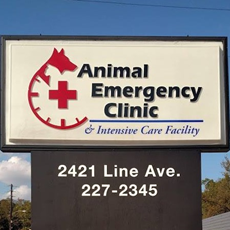Library
-
Cetirizine (Zyrtec®, Reactine®) is an antihistamine used off label to treat and prevent pruritus (itching) associated with atopic dermatitis, urticaria (hives), and insect bite reactions in cats and dogs. It may also be used for respiratory allergy symptoms.
-
Cetyl myristoleate is a supplement given by mouth and is used over the counter to treat osteoarthritis, most commonly in dogs. Give as directed by your veterinarian. Side effects are uncommon but may include gastrointestinal upset. Use cautiously in debilitated, pregnant, or lactating pets. If a negative reaction occurs, please call your veterinary office.
-
Chamomile is given by mouth or applied topically and is used off-label and over the counter to treat inflammatory skin conditions, gastrointestinal upset, and anxiety. Give as directed by your veterinarian. Side effects are uncommon if used at the proper dose, but may include vomiting, diarrhea, or skin irritation. Do not use in pets that are allergic to it or other plants in the daisy family. If a negative reaction occurs, please call your veterinary office.
-
Chediak-Higashi Syndrome is a rare genetic disease of smoke-blue Persian cats. The condition affects how the body processes waste products, resulting in changes within the body’s cells and leading to abnormal pigmentation of the skin and coat. The condition can lead to eye abnormalities and problems with blood clotting, but most cats can have a normal lifespan with careful health monitoring.
-
Chemotherapy is the therapeutic use of chemical agents to destroy or inhibit the growth and division of cancer cells. Usually, chemotherapy is used when tumors are widespread or when there is significant or immediate risk of spread from the primary location. It is often used following the surgical removal of tumors. In some cases, chemotherapy is started prior to surgery. The side effects of chemotherapy are related to the effects of chemotherapy on normal -as well as cancerous- cells. The principal goal of cancer care in pets is to provide cancer control without reducing quality of life.
-
Chemotherapy drugs are used to treat cancer and other conditions in people and animals, and often target and kill rapidly dividing cancer cells, but normal, healthy cells that grow quickly may also be affected. Side effects of ingestion can include stomach upset, neurological signs, bone marrow suppression, and organ damage.
-
The birth of a baby or the adoption of a new child can be associated with both excitement and stress. It is important to prepare your pet for the new addition. Before the baby arrives, introduce novel sounds and scents, and be sure your pet has access to safe resting spaces. Socialize your young pet to children from the start. Children should be directly supervised by an adult when they interact with pets.
-
Children often have very close relationships with pets, and especially with cats. Losing a pet cat is inevitable and may be the child's first experience of death, but there are ways for parents and others to help the child cope with it. With care and support, your child can grow through the grief and heal.
-
Chin acne in cats is a poorly understood disorder of follicular keratinization (the overproduction of keratin, a protein found in the outer layer of skin). If this excess keratin is trapped in the hair follicle, comedones (blackheads) form. Pustules (pimples) may form if bacteria infect the comedones. The underlying causes are not fully understood but may be associated with excess sebum production, viral infection, immunosuppression, stress, or poor grooming. Treatment options are available and often involve improved hygiene.
-
Chlamydial conjunctivitis in cats is highly contagious and can look similar to herpes conjunctivitis. Young cats and kittens are especially vulnerable to this infection, although chlamydia can be detected in cats of all ages. It is one of the most common causes of infectious conjunctivitis in cats. This handout describes the clinical signs and how this condition can be treated or prevented.




